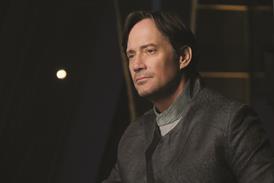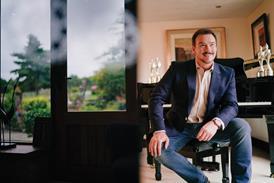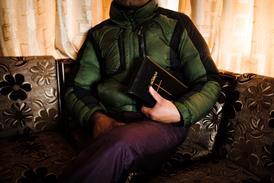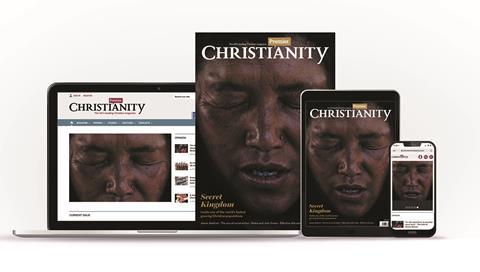As Jews around the world celebrate the Feast of Tabernacles this week, Emily Emanuel explains what the celebration means for followers of Jesus
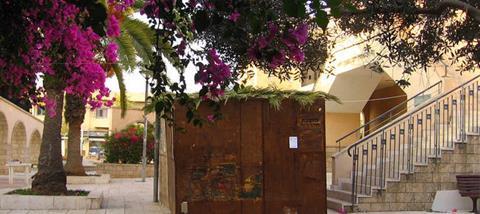
The Feast of Tabernacles started on Sunday night and lasts for seven days. It is the seventh and final appointed festival given to ancient Israel and is rich with symbolism for believers in Jesus.
The feast is also called ‘Sukkot’ which is the Hebrew word for ‘booths’ or ‘tents’. In the Old Testament, God instructed the Israelites to live in tents for seven days (Leviticus 23:42) and the tradition continues to this day! In Israel this week there will be thousands of makeshift tents or ‘Sukkahs’ that people will dine and sometimes sleep in (see above picture). It all serves as a reminder of when God led the Israelites by his presence in the Sinai desert as they lived in tents and that the Lord provided for their every need.
But this feast also pointed the Israelites to a time when God would again ‘tabernacle’ with his people, in the future. As Christians, this is something we can joyfully celebrate, and it's something the early (largely Jewish) Church understood. See for example, John 1:14 which can be translated: "The Word [Jesus] became flesh and tabernacled among us.
Here are 3 things I believe Christians should understand about this biblical festival:
1. Jesus used the festival to reveal his messianic identity
Jesus not only celebrated the feast but also declared one of his most famous messianic revelations during it.
During the time of Christ, the Feast of Tabernacles had come to be known as simply ‘The Feast’. The celebrations pointed toward a future time of messianic hope and salvation. This was especially seen during the ‘water libation’ and ‘illumination’ ceremonies.
During the water libation ceremony the temple priests gathered a pitcher of water from the pool of Siloam and poured it out on the altar inside the Temple. The pouring out of the water expressed Israel’s hope for future rains to produce an abundant harvest. However at the time of Jesus, Israel was spiritually destitute. They were living under Roman rule. Even the Holy of Holies was empty and dry. This moment in the feast wasn't just a cry for physical rain, but a desperate cry that God would pout out his spirit - the 'living water' they longed for.
It was during the height of this ceremony, on the final day of the feast, that Jesus chose to stand up and say in a loud voice: “Let anyone who is thirsty come to me and drink. Whoever believes in me, as Scripture has said, rivers of living water will flow from within them” (John 7:37-38).
Jesus was telling them the solution to their spiritual drought is found in him, the true water of life – what a declaration! No wonder when he said this, some declared, “This is the Messiah” (John 7:41).
2. Jesus used the festival to reveal himself as "the light of the world"
The ‘Illumination of the temple' was another important ceremony during the feast. It involved the lighting of four golden oil-fed lamps in the Court of Women. These lamps were 75 feet high menorahs and candelabras that were lit in the temple at night to remind Israel of the pillar of fire that had led them in their wilderness journey. The light was so bright that it is said to have illuminated the entire city.
This ceremony was also a reminder that God had promised to send a light to renew Israel's glory, release them from bondage, and restore their joy. This was the context for Jesus' declarataion: “I am the light of the world. Whoever follows me will never walk in darkness, but will have the light of life.” (John 8:12).
The people knew that the promise of light was intrinsically linked with the messianic hope. The light of this ceremony only lit up Jerusalem and would eventually be extinguished. But Jesus claimed to be the eternal ‘Light of the world’.
In this statement he was implying that he was not just a good teacher, or a prophet but the light of God - the same light that led them through the wilderness in Sinai; the shekinah glory of God that they were crying out for. The very real presence of God.
3. The Feast points ahead to Christ's return
The Feast of Tabernacles is also a prophetic feast that looks to the future age. The end of Zachariah alludes to this truth by placing the Feast of Tabernacles at the centre of God’s future kingdom on earth where all nations will worship him (Zachariah 14:16).
It points towards a time when God will again tabernacle on earth, when Jesus comes and restores all things.
“Look! God’s tabernacle is now among the people, and he will dwell with them. They will be his people, and God himself will be with them and be their God. He will wipe every tear from their eyes. There will be no more death or mourning or crying or pain, for the old order of things has passed away." (Revelation 21:3-4)
Revelation goes on to describe the New Jerusalem, which contains two features of the feast’s theme of water and light. There is a ‘river of life’ and the city has no need for the sun or moon because the Glory of God is it’s light. The lamb (Jesus) is its lamp.
What it means for us
This week is a good time to reflect and thank God for his provision and presence in our lives, and to remember that he is the source of our security and hope, not man-made structures.
It is also a time to rejoice in the present, knowing that we have access to the living water and the light of the world that tabernacles in our heart.
Finally it is a time to look forward to his return, when God restores all things, and know that our role is to invite people into this Kingdom where the light does not end and there is living water that gives eternal life.
Happy Sukkot!







